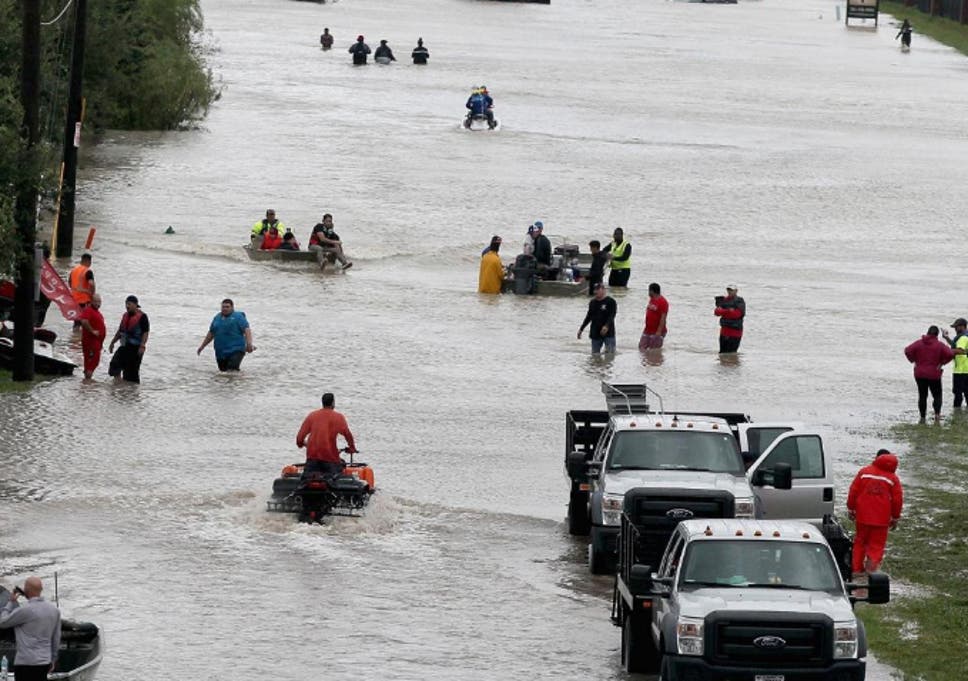THE PHILIPPINES is among the most vulnerable to the impact of natural disasters and climate change. Last year saw 24 tropical depressions, 20 tropical storms, 16 typhoons, one super typhoon, and at least 13 earthquake episodes.
The cost of these damages goes beyond asset losses: a 2017 World Bank report titled “Unbreakable: Building the Resilience of the Poor in the Face of Natural Disasters,” noted that an estimated one million Filipinos were “plunged into poverty” after Super typhoon Yolanda caused $12.9 billion worth of damage. During the launch of that report, Socioeconomic Planning Secretary Ernesto M. Pernia said that the cumulative impact of natural disasters cost the Philippines an estimated 0.5%-0.6% of economic output annually, which may reduce economic growth by as much as 0.3-0.4 percentage points.
While natural disasters are commonly associated with the agriculture sector, banks are not spared from the wrath of nature. In an email to BusinessWorld, the Bangko Sentral ng Pilipinas (BSP) said that major natural disasters could materially impact banks and other financial institutions’ operations and profitability, especially in terms of provision of credit, loan collection, liquidity constraints, and other disruptions to critical financial services.
“In our analysis using ‘The Big One’ (i.e., a hypothetical earthquake) scenario, financial consumers will most likely need access to their savings accounts, hence, we have worked with the industry on how they can ensure provision of said services to their clients,” the BSP said.
“On the other hand, the banks may themselves be in need of additional liquidity to service these withdrawals, of which the BSP’s business continuity plan (BCP) might need to be activated to provide standby liquidity support for banks.”
The BSP said that to ensure sound BCPs, they must be tested on a regular basis. Nevertheless, the central bank has said that banks have been prepared in dealing with potential disruptions from natural disasters based on their periodic onsite examinations and offsite supervisory activities.
“[A]s early as 2000, the BSP rules and regulations on business continuity were already in place mandating banks and other financial institutions to put in place adequate measures, such as redundant facilities, alternate data centers and other arrangements to ensure continued provision of mission-critical financial services,” it said.
The central bank added that it has updated such regulations in line with recent developments in global standards and best practices through BSP Circular No. 951 dated March 20, 2017, which provided more comprehensive guidelines on business continuity management. Under these measures, banks were given up to four hours as the maximum response time to resume operations when disaster strikes.
“BSFIs (BSP-Supervised Financial Institutions) need to identify mission-critical services that should continuously be available for their financial consumers. All processes, systems and resources associated with such services will now have to be protected to ensure continuity in the event of disasters,” the central bank said, adding that BSFIs would also have to consider the impact to the business as well as the degree of risks to be able to come up with sound arrangements with the necessary resources and infrastructure in place.
BSP added that non-compliance will be subject to BSP supervisory enforcement actions ranging from penalties, directives and other non-monetary sanctions depending on the degree of non-compliance.
Apart from executing its regulatory functions, the central bank also has relief measures in place: “The BSP extends assistance to affected BSFIs through regulatory relief such as waiver of interests on loans, moratorium on penalties and other sanctions relative to regulatory reporting and other concessions,” it said.
“Moreover, standby liquidity and credit facilities of the BSP are readily available to assist affected BSFIs.”
HOW BANKS PREPARE FOR THEIR BCPS
For Bank of the Philippine Islands (BPI) Chief Risk Office Marita Socorro D. Gayares, the Bank has been diligent in preparing for disruptions from natural disasters and that its BCPs are in place: “[W]e normally perform test exercises and tweak as necessary. We have studied the guidelines, identified the requirements that are not yet in place, and implemented changes to fully comply with the guidelines,” she said.
Ms. Gayares said that BPI’s BCP consists of “procedures on the response, recovery, resumption and restoration of critical processes within the set time objective…”
“[The] BCP is said to be effective if, during the testing or an actual BCP activation, immediate recovery and resumption of critical business processes was achieved, e.g. within the defined time frame,” the BPI official said.
The BCP activation, Ms. Gayares said, is cascaded from its main office down to the operating units including the branches. “Recovery procedures and BCP status are reported regularly to ensure that proper implementation was done,” she said.
For government-owned Development Bank of the Philippines (DBP), an approval process has been developed to make sure that their BCP can be implemented from the Head Office to the different branches.
“For events with bank wide impact, the Head Office Crisis Management Team (CMT) decides on the implementation of the BCP. For events with regional impact, the CMT in the region makes the decision, and if only a certain department or branch is affected, the head of that department or branch implements the BCP. However, authorized officers in the Head Office should still be informed if the BCP is implemented in the region, department, or branch level,” DBP explained.
DBP said that above all else, the employees’ safety is crucial in implementing its BCPs effectively.
“In disaster preparedness, while physical security (of premises) is a major concern, the safety of personnel is the Bank’s ultimate priority in any scenario, followed by the recovery of critical services,” DBP said.
BPI’s Ms. Gayares shared the same view on its personnel’s’ safety: “[E]mergency response plans are in place and these are regularly tested to ensure our employees are ready to respond. We have also identified evacuation areas for our employees across regions,” she said.
“As a financial service provider, we need to make sure that the basic banking services can be restored immediately, while ensuring the safety and security of our employees,” she added.
For its part, BDO Unibank, Inc. (BDO) President and Chief Executive Officer Nestor V. Tan mentioned that the best preparation for disasters are equipping its employees and fool-proofing its BCPs.
“A BCP is effective if all employees are aware of their respective roles and responsibilities and are able to perform these during an actual business disruption. Preparation is key by regularly testing and updating the BCP based on the results of each test, given that a BCP should reflect the current capabilities and resources of the organization,” Mr. Tan said.
BDO has appropriate BCPs in place in each branch and a centralized BCP coordinating team to make sure its BCPs are properly implemented and supervised.
“The bank (i.e, each unit of the bank) and its branches have their respective BCP which outlines the procedures to be followed per disruption scenario…As well, there is a BCP Central Coordinating Team that oversees and ensures that the BCP is properly implemented from the time disaster strikes up to recovery,” Mr. Tan said.
FAST BUSINESS RECOVERY
Aside from preparedness, banks also have in place steps to hasten recovery in their operations following a natural disaster.
“To mitigate the impact of natural disasters on the operations of BDO branches and ensure continued bank operations and customer access to BDO products and services, the bank has assigned a buddy branch for each branch nationwide. This allows BDO employees of the affected branch to temporarily report to the buddy branch to service the transactions of clients of their branch affected by the natural disasters,” said BDO’s Mr. Tan.
In cases of prolonged occurrence of a calamity, “the bank implements this BCP from the time of the disaster until full recovery,” he said.
For DBP, it is important to establish a clear communications plan with its personnel and customers.
“Customers are made aware if products and services are already available despite the onset of a natural calamity. Likewise, alternatives are utilized lacking the availability of required resources. Personnel are trained to handle or undertake contingency measures in order to that business operations may be resumed soonest,” it said.
“In cases of a prolonged occurrence of the after-effects of a calamity, advisories and information regarding the status of the Bank’s services shall be immediately disseminated to clients, including updates if necessary.”
For BPI, Ms. Gayares said that the Bank has redundancies and backup facilities for the critical components of their operations, including business recovery sites located in strategic locations.
“[W]e also have cross-functional teams identified to manage potential disruptive events, emergency situations, or disasters. This ensures that our clients can go to any BPI branch to fulfill their transactions and other banking needs,” Ms. Gayares said.
LEARNING FROM EXPERIENCE
Years of being exposed to different natural calamities, banks learned to improve its BCPs as well as their customer information management.
For one, DBP is requiring all of its business units to prepare, review, and update their BCPs to include the results of their tests and exercises as well as lessons learned from previous experiences in dealing with actual disasters. It has also created a “centralized management information system” in order to provide easy access to client information from one source.
In the case of BPI, it has reinforced its bank-wide “First Aid and Basic Life Support Training” for their personnel. “We have also strengthened the partnership with the Philippine Disaster Resilience Foundation, which coordinates local support from the government and other response agencies,” BPI’s Ms. Gayares said.
Meanwhile, BDO’s Mr. Tan said that they review and update their BCPs “based on whether or not the recovery objectives are met.”
“The bank back-tests its BCP[s based on] an actual disruption…and continually improves its BCP[s through] enterprise test scenarios and awareness programs based on the severity and impact of an actual disaster,” he said. — Lourdes O. Pilar



